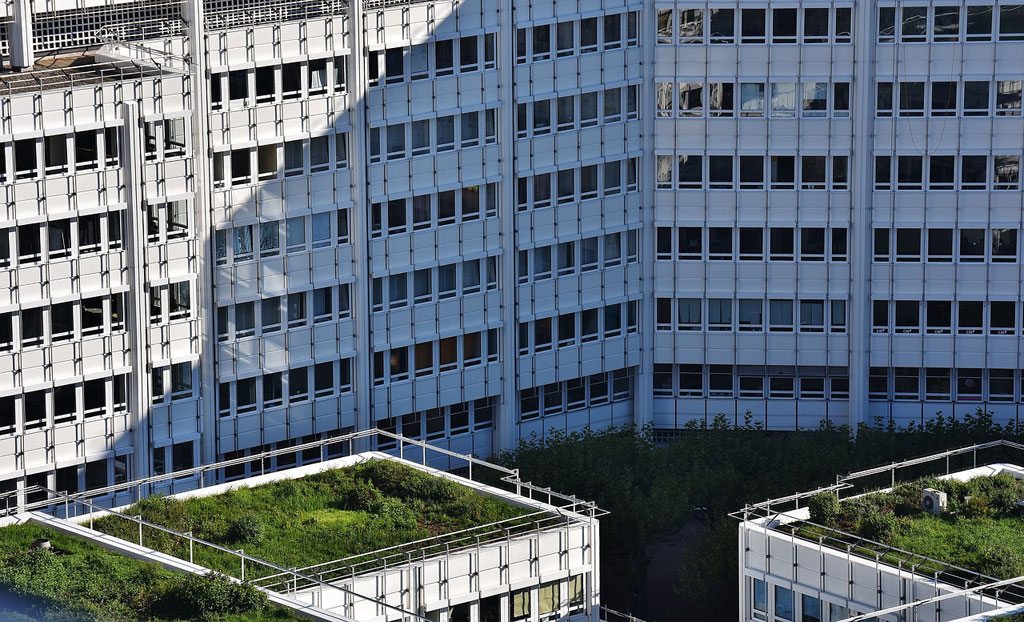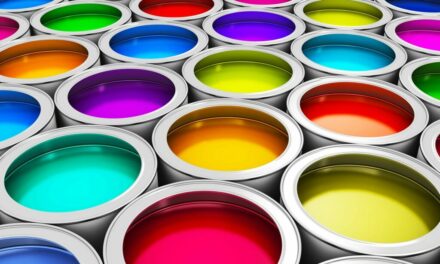Achieving Urban Resilience report demonstrates citywide technology solutions to enhance public health, strengthen urban equity and resilience and slow climate change while saving D.C. $5 billion dollars over 40 years
Today, Achieving Urban Resilience: Washington, D.C., a new report authored by Capital E, documents and quantifies the large-scale environmental, health and economic benefits that Washington, D.C. could gain from citywide adoption of smart surface technologies.
The report documents how the District could save $5 billion with smart surface strategies, such as cool roofs, green roofs, solar PV and porous pavements while enhancing health and livability and cutting summer peak temperature. Partners in this work include the American Institute of Architects, the National League of Cities, DowntownDC BID, USGBC, the National Housing Trust and the Chesapeake Bay Foundation.
“This report represents a major step in understanding and quantifying the benefits of adopting cost-effective strategies to manage sun and rainfall at a city level,” said Greg Kats, lead author of the report. “Increasing summer heat and smog threaten city livability and summer tourists. This report provides a powerful framework to combat climate change while improving public health and saving money.”
Rainfall and the effects of sunlight are undermanaged by cities and city planners, in turn costing cities billions of dollars from avoidable health-, energy- and stormwater-related costs while undermining livability and resilience and contributing to climate change. The 61 square miles of surface in Washington, D.C. include 16 percent roofs and over 24 percent paved area. As a result, the District, like most cities, suffers from higher summer temperatures and lower air quality than surrounding suburban and rural areas.
“What this report convincingly demonstrates is that there are cost-effective technologies and strategies for managing sun and water that will deliver billions of dollars in financial benefits to the city and its residents,” said Dan Tangherlini, former Washington, D.C., city administrator and former administrator of the U.S. General Service Administration. “Delaying this transition would impose large financial and social costs, particularly on places of lower economic opportunity [and on] the elderly and children. We now have the roadmap—now we must follow it.”
Implementing these smart surface solutions city-wide would cost-effectively achieve a range of sustainability, livability and competitiveness objectives, including:
- Energy: Reduce electricity purchases from the grid by 8.5 percent, relative to 2013 consumption levels.
- Water: Reduce stormwater runoff to protect local water bodies while reducing potable water use.
- Climate and Environment: By full implementation, reduce greenhouse gas emissions by approximately 5.5 percent of 2013 emissions while enhancing resilience to climate change by reducing city temperatures
- Built Environment: Improve sustainability performance of new and existing buildings.
- Nature: Expand tree canopy and other green landscape to enhance city-wide ecosystem.
- Jobs and Economy: Create more than 2,400 well-paying green jobs in the District over 40 years.
- Equity and Diversity: Improve livability, particularly in low-income areas that tend to have less green cover and fewer efficient buildings.
- Health and Wellness: Improve air quality and the public health of District residents and visitors.
Broad deployment of these smart surfaces solutions would cost-effectively reduce health and energy costs citywide while increasing employment, resilience and livability for its citizens, institutions and companies.
“Capital E helped make the business case for green building with its research in the early 2000s, and this new research is equally important in showcasing the sustainable built environment’s financial benefits at the city scale,” said Mahesh Ramanujam, president and CEO, USGBC. “The Achieving Urban Resilience report provides U.S. cities with an actionable framework to engage private sector partners on solutions to advance public health, equity and climate resilience.”
Learn more about smart surface solutions and download the report.
For more information on the report findings, please contact Greg Kats.
This report was created in partnership with USGBC, the American Institute of Architects, the Catholic Climate Conference, Casey Trees, the Chesapeake Bay Foundation, the Department of Energy and Environment, the Department of General Services, DowntownDC BID, EcoDistricts, Enterprise Community Partners, Global Cool Cities Alliance, National Housing Trust, National League of Cities, and Rock Creek Conservancy.
The report was funded by the District of Columbia Department of General Services (DGS) and the Department of Energy and Environment.
About the U.S. Green Building Council
The U.S. Green Building Council (USGBC) is committed to a prosperous and sustainable future through cost-efficient and energy-saving green buildings. USGBC works toward its mission of market transformation through its LEED green building program, robust educational offerings, a nationwide network of chapters and affiliates, the annual Greenbuild International Conference & Expo, the Center for Green Schools and advocacy in support of public policy that encourages and enables green buildings and communities. For more information, visit usgbc.org, and connect on Twitter, Facebook and LinkedIn.




